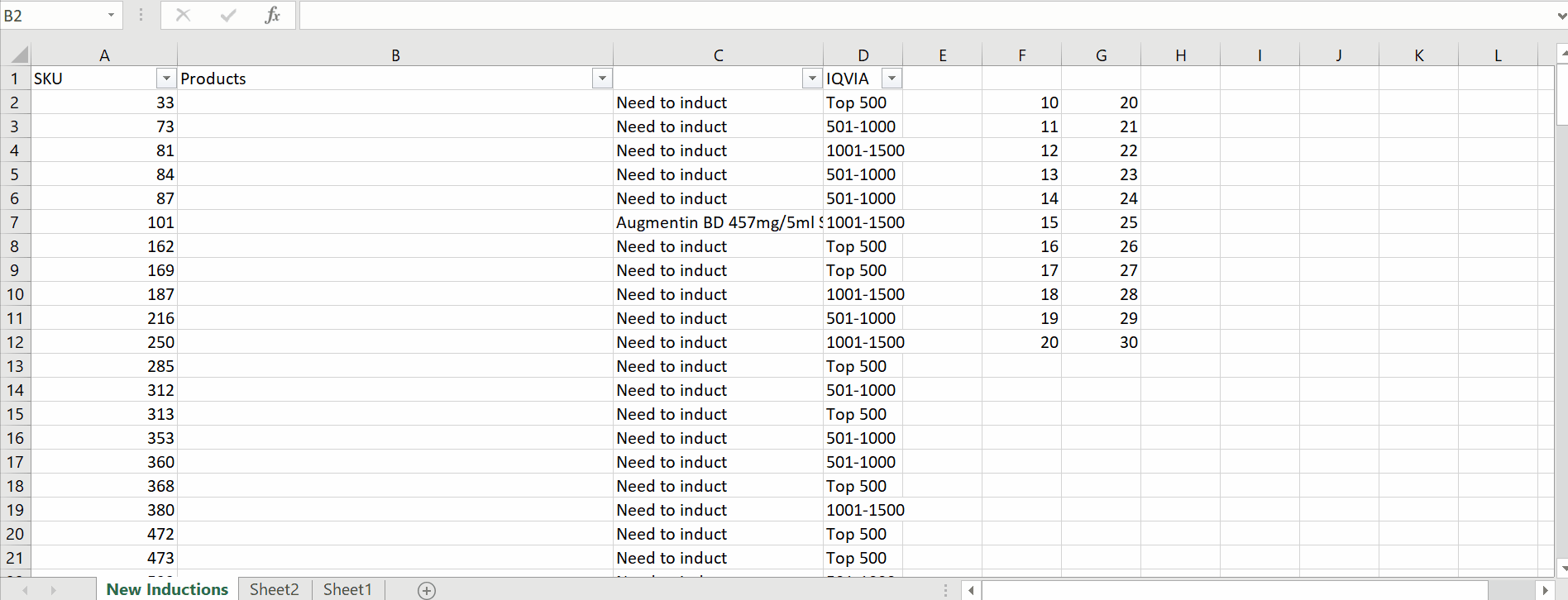5 Simple Ways to Pull Data with Sheets

Data extraction and manipulation are crucial skills in the modern digital landscape. Google Sheets, a powerful tool, offers a user-friendly interface to streamline these processes. In this article, we delve into five straightforward methods to extract data from various sources, harnessing the full potential of Sheets to enhance your productivity and data management.
1. Importing Data from URLs

Google Sheets allows you to import data directly from URLs, eliminating the need for manual data entry. This feature is particularly useful when dealing with dynamic data sources like web pages or APIs. Here’s a step-by-step guide to importing data from a URL:
Step 1: Open a New Sheet
Create a new Google Sheet or navigate to an existing one. Ensure that you have a clear idea of the data you wish to import and its location on the web.
Step 2: Use the ImportRange Function
The ImportRange function is your go-to tool for URL data extraction. Its syntax is as follows: =ImportRange(url, range). Here, url refers to the web address of the data source, and range specifies the range of cells you wish to import. For instance, if you want to import data from cells A1 to B5 on a specific webpage, the range would be “A1:B5”.
Step 3: Apply the Function
In your Sheet, navigate to the cell where you want the imported data to appear. Input the ImportRange function with the appropriate URL and range. For example: =ImportRange(”https://example.com/data”, “A1:B5”). Press Enter, and the data will be imported directly into your Sheet.
| URL | Range |
|---|---|
| https://example.com/data | "A1:B5" |

Pro Tip
2. Fetching Data from Google Drive

Google Sheets enables seamless data transfer between various Google services. You can effortlessly import data from other Sheets, Google Docs, or even images stored on Google Drive. Here’s how:
Step 1: Open Your Sheet
Begin by opening the Sheet where you want to import the data. Ensure that the source file (another Sheet, Doc, or image) is accessible and shared with the same Google account.
Step 2: Use the Import Function
The Import function is your key to importing data from Google Drive. Its syntax is =Import(file, [sheet_name], [range]). Here, file refers to the path of the source file, sheet_name is the name of the sheet within the file (if applicable), and range specifies the cell range to import. For instance, if you want to import data from Sheet1 of a file named SourceData.xlsx, the function would be: =Import(“SourceData.xlsx”, “Sheet1”, “A1:B5”).
| File | Sheet Name | Range |
|---|---|---|
| SourceData.xlsx | "Sheet1" | "A1:B5" |
Step 3: Apply the Function
In your Sheet, navigate to the cell where you want the imported data to appear. Input the Import function with the appropriate file path, sheet name, and range. Press Enter, and the data will be seamlessly transferred.
3. Extracting Data from Google Search
Google Sheets provides an innovative way to extract data directly from Google Search results. This feature is especially beneficial when you need quick access to statistical data or facts.
Step 1: Open the Sheets Query Editor
Within your Sheet, navigate to Extensions > Query Editor. This will open a sidebar where you can construct your search query.
Step 2: Construct Your Query
In the Query Editor, you can input your search terms and define the data range you wish to extract. For instance, if you’re searching for the population of a city, your query might look like: SELECT * WHERE isin(source, “city population”). This query will return a table with various cities and their corresponding populations.
Step 3: Run the Query
Once your query is constructed, click Run in the Query Editor. The extracted data will be displayed in a new sheet within your Google Sheets document.
4. Importing Data from CSV or Excel Files
Importing data from CSV or Excel files is a straightforward process in Google Sheets. Whether you have data stored locally or on a web server, Sheets can handle the import efficiently.
Step 1: Open Your Sheet
Start by opening the Sheet where you want to import the data. Ensure that the CSV or Excel file is accessible and shared with the same Google account.
Step 2: Use the Import Function
The Import function is employed for importing data from CSV or Excel files. Its syntax is =Import(file, [sheet_name], [range]). Here, file refers to the path of the source file, sheet_name is the name of the sheet within the file (if applicable), and range specifies the cell range to import. For example, if you want to import data from a CSV file named Data.csv, the function would be: =Import(“Data.csv”, “Sheet1”, “A1:B5”).
| File | Sheet Name | Range |
|---|---|---|
| Data.csv | "Sheet1" | "A1:B5" |
Step 3: Apply the Function
In your Sheet, navigate to the cell where you want the imported data to appear. Input the Import function with the appropriate file path, sheet name, and range. Press Enter, and the data will be imported from the CSV or Excel file.
5. Pulling Data from Databases

Google Sheets supports data extraction from various database sources, including MySQL, PostgreSQL, and Microsoft SQL Server. This feature is ideal for businesses and individuals managing extensive datasets.
Step 1: Set Up a Database Connection
To pull data from a database, you first need to establish a connection. This can be done using the Import function with the appropriate database connector. For instance, to connect to a MySQL database, you might use: =Import(“MySQL”, “servername”, “username”, “password”, “database”, “table”, “column”). Replace the placeholders with your actual database details.
| Database | Server Name | Username | Password | Database | Table | Column |
|---|---|---|---|---|---|---|
| MySQL | servername | username | password | database | table | column |
Step 2: Construct Your Query
Once the connection is established, you can construct a query to extract the desired data. This can be done using SQL syntax within the Import function. For example: =Import(“MySQL”, “servername”, “username”, “password”, “database”, “SELECT * FROM table”). This query will return all data from the specified table.
Step 3: Apply the Function
In your Sheet, navigate to the cell where you want the imported data to appear. Input the Import function with your database connection details and the SQL query. Press Enter, and the data will be imported directly from the database.
Conclusion
Google Sheets offers a plethora of tools to simplify data extraction and management. From importing data from URLs and Google Drive to extracting information from Google Search and databases, these methods empower users to work efficiently with diverse data sources. By harnessing these features, you can streamline your data workflows and make informed decisions based on accurate, up-to-date information.
FAQs
Can I import data from multiple sources into a single Sheet?
+
Absolutely! You can use various functions like Import, ImportRange, and Query to import data from multiple sources into a single Sheet. Just ensure that you organize the data logically to maintain clarity.
How often does Google Sheets update imported data from external sources?
+
By default, Google Sheets updates imported data automatically when the source data changes. However, you can adjust the refresh rate or trigger manual updates using the Refresh button in the Query Editor.
Are there any limitations to the data I can import into Google Sheets?
+
Google Sheets imposes certain limits on the amount of data that can be imported, especially when dealing with large datasets. It’s recommended to keep your imported data within reasonable limits to maintain performance and avoid potential issues.
Can I automate the data import process in Google Sheets?
+
Yes, you can automate data imports using Google Apps Script. This allows you to schedule data imports at regular intervals or trigger them based on specific events. It’s a powerful feature for maintaining up-to-date datasets.
What are some best practices for organizing imported data in Google Sheets?
+
Best practices include using consistent naming conventions, adding descriptive headers, and employing data validation to ensure the accuracy and integrity of your imported data. Additionally, consider using named ranges and filters to make your data more accessible and manageable.



